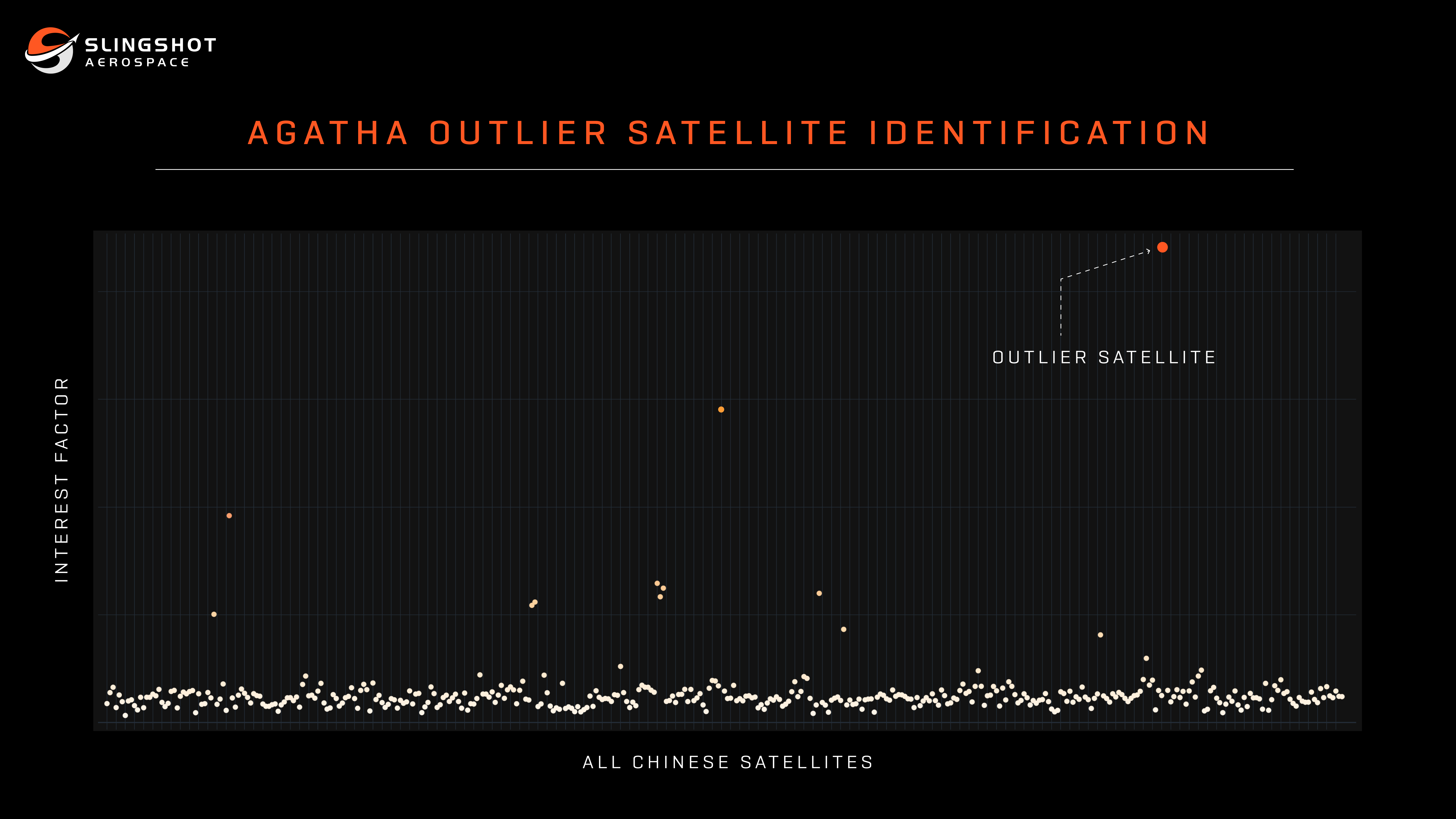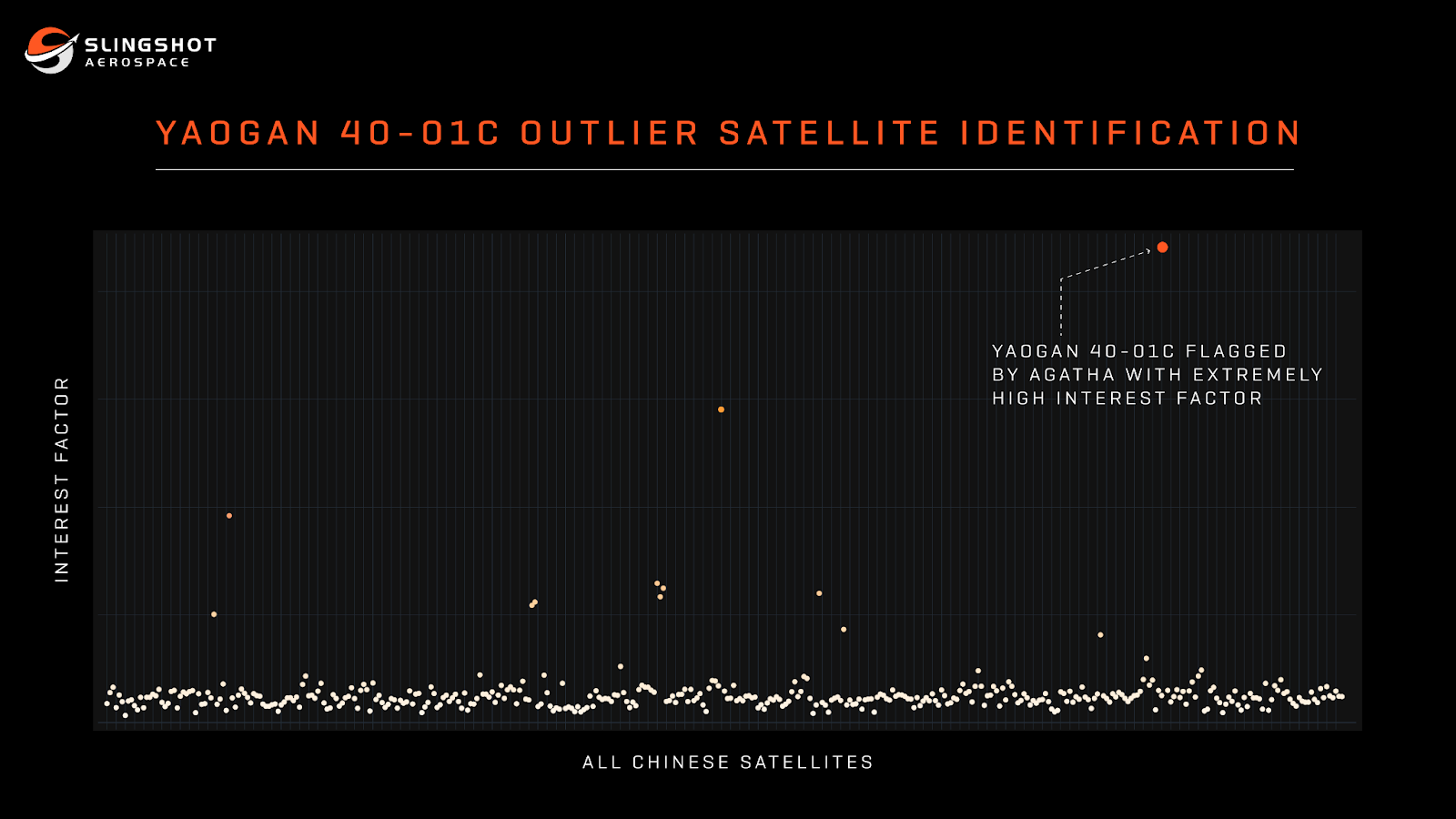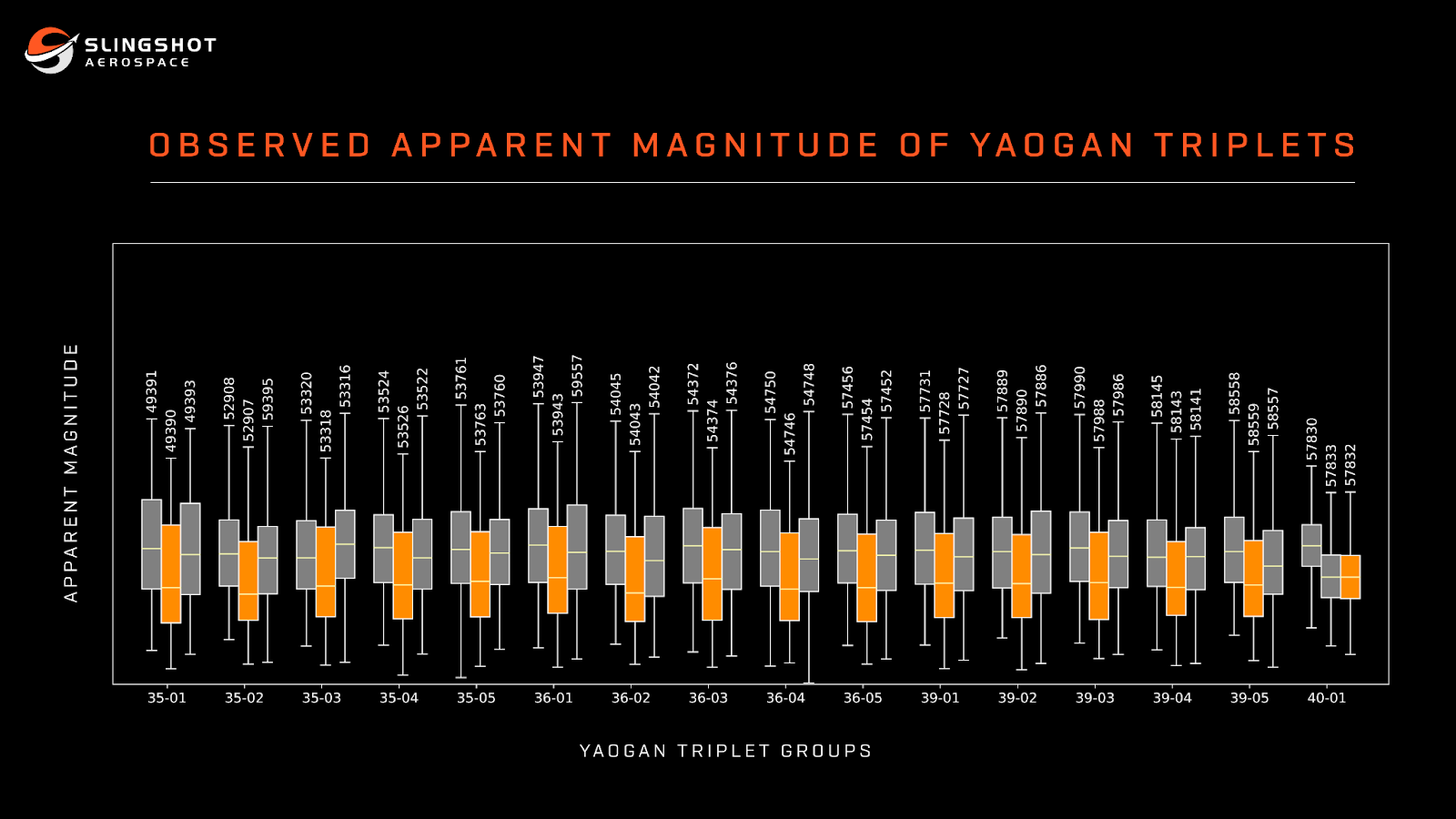
September 26, 2024
Earlier this year, Slingshot Aerospace unveiled Agatha, an AI tool developed in conjunction with DARPA to identify outlier satellites within the rapidly growing population of large constellations in low Earth orbit (LEO). Agatha uses artificial intelligence to process data from the Slingshot Global Sensor Network, Slingshot Seradata, and third-party data sources to detect subtle differences in satellite characteristics and behavior and flag potentially nefarious behavior, changes to a satellite’s mission profile, satellite malfunctions, and more.
Agatha has been autonomously profiling domestic and foreign LEO satellite constellations for the past several months, totaling more than 7,000 individual satellites, and it recently detected an outlier satellite among one of China’s Yaogan ‘triplet’ military reconnaissance satellite groups. There are currently over 25 distinct groups of 3 satellites (or triplets) that fly together, totaling over 75 individual satellites in orbit.
In late July, Agatha flagged a specific satellite, Yaogan 40-01C (NORAD ID: 57833), as a distinct satellite based on Agatha’s ‘interest factor’ metric. The ‘interest factor’ metric is Agatha’s final measure of distinctiveness based on a number of algorithms and data streams, which ultimately provide the reasoning for flagging individual outlier satellites. The image below from Agatha’s user interface visually highlights the distinctiveness of Yaogan 40-01C when compared to all other Chinese satellites.

A screenshot from the Agatha developer interface shows the high “interest factor” measure of Yaogan 40-01C.
Of the three satellites within the Yaogan 40-01 trio that launched in September 2023, the “C” satellite was flagged by Agatha primarily based on ongoing analysis of its photometric signature – or changes in its apparent brightness as measured over time by Slingshot’s optical telescopes. Following the flagging of the Yaogan 40-01C satellite, all three Yaogan 40-01 satellites were compared to other Chinese triplet groups, revealing peculiar reflectance patterns that differ dramatically from other sets of Yaogan triplets (see below). While the root cause of the difference in photometric signatures is not immediately evident, these differences could reflect a change in attitude (or orientation) when compared to other groups of Yaogan triplets, which may suggest a different mission or mode of data collection. Alternatively, the differences in the satellite reflectance might indicate something more dramatic, such as new types of satellites being flown in this particular Yaogan 40-01 group. This difference in the photometric signatures of the 40-01 triplet adds credence to earlier reporting that this triplet of Yaogan satellites may have a different mission from previous triplets.

The above chart highlights the distribution of apparent magnitudes for Yaogan triplet satellites in groups 35, 36, and 39, which Agatha indicated to be similar to the 40-01 group. Here, you can clearly see a trend reversal in the apparent magnitude of the Yaogan 40-01C (ID: 57833) vs. other satellites in its triplet.
Regardless of the reason for the difference in the photometric signatures of the Yaogan 40-01 triplet, Agatha’s identification of the outlier satellites is the first step in identifying these types of anomalies, which can then be investigated further via additional observations from Slingshot’s Global Sensor Network or other methodologies.
In this case, additional investigation into the Yaogan 40-01 triplet also identified that the 40-01 triplet is flying in a much more tightly spaced formation when compared to other triplet groups. Slingshot’s subsequent analysis indicated that all three satellites are within 50km of each other – unlike the other triplets, which are often positioned hundreds or thousands of km apart. Agatha will continue to scrutinize and analyze the Yaogan 40-01 triplet, which orbits at a higher altitude than many of the other Yaogan triplets, searching for additional clues that might indicate differences in the 40-01 triplet’s mission or capabilities.
Agatha’s novel ability to ingest oceans of data and derive comparisons among thousands of satellites was illustrated by the identification of minute differences exhibited by satellites in the Yaogan 40-01 triplet. Insights like these support broader space domain awareness and ensure that the global community is better positioned to monitor space on an ever-broadening scale.
As the number of constellations in low Earth orbit (LEO) continues to increase, it is becoming increasingly difficult to simultaneously monitor and characterize the behavior of all operational satellites. By adding Slingshot’s Agatha to your toolkit, you gain a powerful ally in managing the complexities of space, staying ahead of potential risks, and enhancing operational awareness in this evolving domain.
For more information on how Agatha can help you achieve your space domain awareness mission through AI-generated insights, contact sales@slingshot.space.
Experience the power of Slingshot’s integrated platform — bringing together real-time orbital data, advanced analytics, AI-powered tools, and developer-friendly APIs.